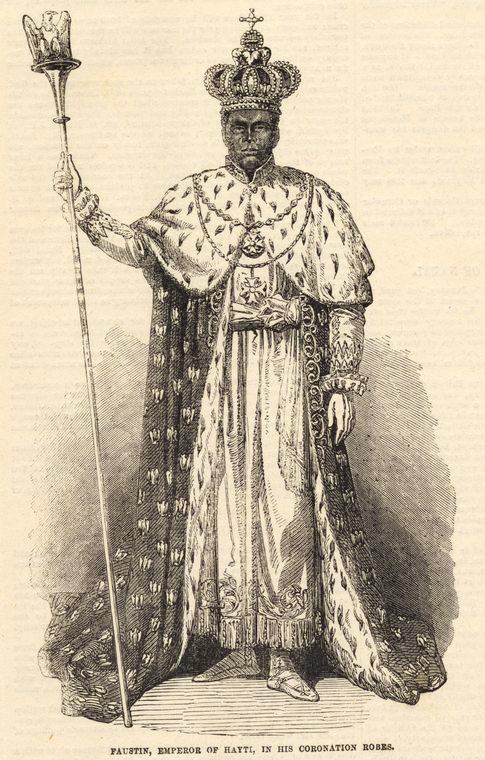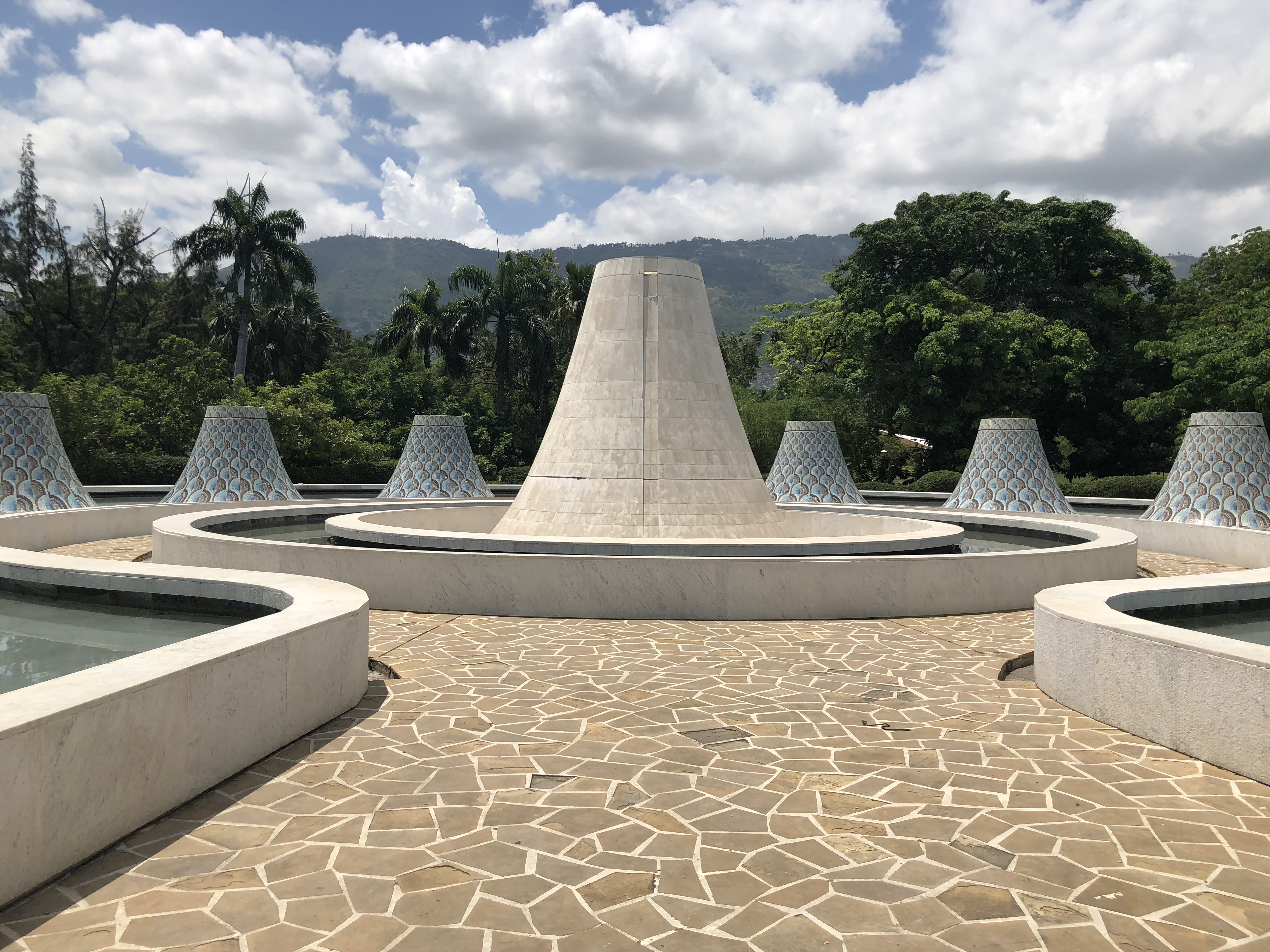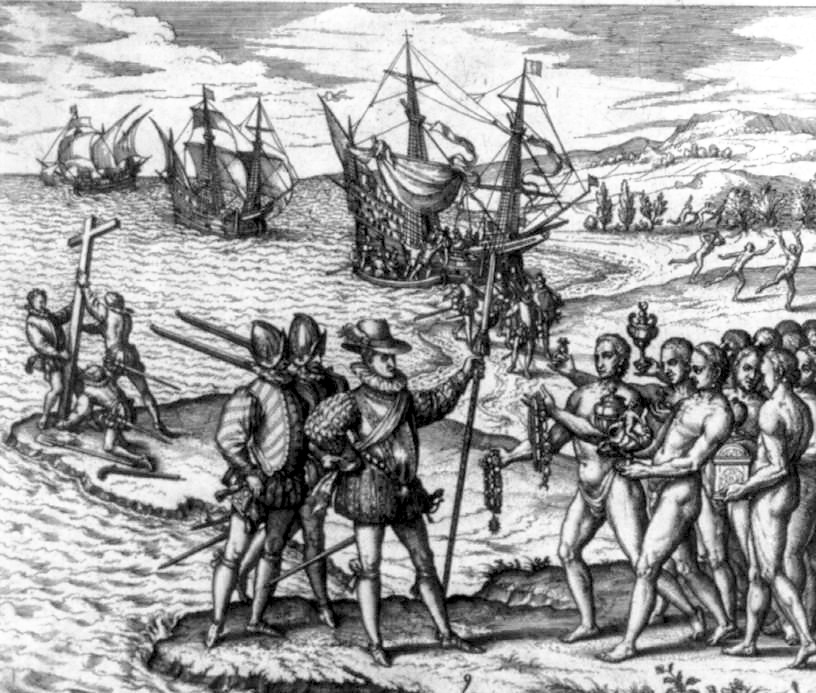|
Crown Of Faustin I
The crown of Faustin I is the crown of Faustin Soulouque, who ruled over Haiti as President of the Republic from 1847 to 1849 and as Emperor Faustin I of the Second Empire from 1849 to 1859. The crown is decorated with emeralds, diamonds, garnets, and other jewels. It had been exhibited in the Musée du Panthéon National Haïtien (MUPANAH). However, it was found that some jewels on the crown were stolen at some unknown time. Due to the vandalism it suffered, the crown was transferred, under high surveillance, to a safe place for protection on January 31, 2007. References {{DEFAULTSORT:Crown Of Faustin I Faustin I Second Empire of Haiti The Second Empire of Haiti, officially known as the Empire of Haiti (french: link=no, Empire d'Haïti, ht, Anpi Ayiti), was a state which existed from 1849 to 1859. It was established by the then-President, former Lieutenant General and Supreme ... History of Haiti National symbols of Haiti ... [...More Info...] [...Related Items...] OR: [Wikipedia] [Google] [Baidu] |
Faustin I
Faustin-Élie Soulouque (15 August 1782 – 3 August 1867) was a Haitian politician and military commander who served as President of Haiti from 1847 to 1849 and Emperor of Haiti from 1849 to 1859. Soulouque was a general in the Haitian Army when he was appointed President of Haiti. He acquired autocratic powers, purged the army of the ruling elite, installed black loyalists in administrative positions and the nobility, and created a secret police and private army. Soulouque was an enthusiastic '' vodouisant'', maintaining a staff of bokors and mambos, and gave the stigmatized vodou religion semi-official status which was openly practiced in Port-au-Prince. Soulouque declared the Second Empire of Haiti in 1849 after being proclaimed Emperor under the name Faustin I, and formally crowned in 1852. Several unsuccessful attempts to reconquer the Dominican Republic eroded his support and he abdicated in 1859 under pressure from General Fabre Geffrard and Dominican military victory. S ... [...More Info...] [...Related Items...] OR: [Wikipedia] [Google] [Baidu] |
Crown
A crown is a traditional form of head adornment, or hat, worn by monarchs as a symbol of their power and dignity. A crown is often, by extension, a symbol of the monarch's government or items endorsed by it. The word itself is used, particularly in Commonwealth countries, as an abstract name for the monarchy itself, as distinct from the individual who inhabits it (that is, ''The Crown''). A specific type of crown (or coronet for lower ranks of peerage) is employed in heraldry under strict rules. Indeed, some monarchies never had a physical crown, just a heraldic representation, as in the constitutional kingdom of Belgium, where no coronation ever took place; the royal installation is done by a solemn oath in parliament, wearing a military uniform: the King is not acknowledged as by divine right, but assumes the only hereditary public office in the service of the law; so he in turn will swear in all members of "his" federal government''. Variations * Costume headgear imitati ... [...More Info...] [...Related Items...] OR: [Wikipedia] [Google] [Baidu] |
Faustin Soulouque
Faustin-Élie Soulouque (15 August 1782 – 3 August 1867) was a Haitian politician and military commander who served as President of Haiti from 1847 to 1849 and Emperor of Haiti from 1849 to 1859. Soulouque was a general in the Haitian Army when he was appointed President of Haiti. He acquired autocratic powers, purged the army of the ruling elite, installed black loyalists in administrative positions and the nobility, and created a secret police and private army. Soulouque was an enthusiastic '' vodouisant'', maintaining a staff of bokors and mambos, and gave the stigmatized vodou religion semi-official status which was openly practiced in Port-au-Prince. Soulouque declared the Second Empire of Haiti in 1849 after being proclaimed Emperor under the name Faustin I, and formally crowned in 1852. Several unsuccessful attempts to reconquer the Dominican Republic eroded his support and he abdicated in 1859 under pressure from General Fabre Geffrard and Dominican military victory. ... [...More Info...] [...Related Items...] OR: [Wikipedia] [Google] [Baidu] |
Haiti
Haiti (; ht, Ayiti ; French: ), officially the Republic of Haiti (); ) and formerly known as Hayti, is a country located on the island of Hispaniola in the Greater Antilles archipelago of the Caribbean Sea, east of Cuba and Jamaica, and south of The Bahamas and the Turks and Caicos Islands. It occupies the western three-eighths of the island which it shares with the Dominican Republic. To its south-west lies the small Navassa Island, which is claimed by Haiti but is disputed as a United States territory under federal administration."Haiti" ''Encyclopædia Britannica''. Haiti is in size, the third largest country in the Caribbean by area, and has an estimated population of 11.4 million, making it the most populous country in the Caribb ... [...More Info...] [...Related Items...] OR: [Wikipedia] [Google] [Baidu] |
President Of Haiti
The president of Haiti ( ht, Prezidan peyi Ayiti, french: Président d'Haïti), officially called the president of the Republic of Haiti (french: link=no, Président de la République d'Haïti, ht, link=no, Prezidan Repiblik Ayiti), is the head of state of Haiti. Executive power in Haiti is divided between the president and the government, which is headed by the prime minister of Haiti. Prime Minister Ariel Henry currently serves as Acting President following the assassination of Jovenel Moïse, assassination of President Jovenel Moïse on 7 July 2021. Term and election A number of qualifications for the presidency are specified by Chapter III, Section A (Articles 134 and 135) of the 1987 Constitution of Haiti. The president is elected to a five-year term by popular vote. The president may not be elected to consecutive terms; he may serve a second term only after an interval of five years, and may not run for a third term. To be elected president, a candidate must: # be a nati ... [...More Info...] [...Related Items...] OR: [Wikipedia] [Google] [Baidu] |
Republic Of Haiti (1820–1849)
Haiti (; ht, Ayiti ; French: ), officially the Republic of Haiti (); ) and formerly known as Hayti, is a country located on the island of Hispaniola in the Greater Antilles archipelago of the Caribbean Sea, east of Cuba and Jamaica, and south of The Bahamas and the Turks and Caicos Islands. It occupies the western three-eighths of the island which it shares with the Dominican Republic. To its south-west lies the small Navassa Island, which is claimed by Haiti but is disputed as a United States territory under federal administration."Haiti" ''Encyclopædia Britannica''. Haiti is in size, the third largest country in the Caribbean by area, and has an estimated population of 11.4 million, making it the most populous country in the Caribb ... [...More Info...] [...Related Items...] OR: [Wikipedia] [Google] [Baidu] |
List Of Monarchs Of Haiti
The monarchs of Haiti (french: monarques d'Haïti, ht, Monak Ayiti) were the heads of state and rulers of Haiti on three non-consecutive occasions in the 19th century. With complete independence achieved from France in 1804, Haiti became an independent monarchy—the First Empire of Haiti (1804–1806). Haiti reverted to a monarchy in the 1810s, during the Kingdom of Haiti (1811–1820). Haiti reverted for a third and final time to a monarchy during the Second Empire of Haiti (1849–1859). The period known as the Duvalier dynasty (1957–1986), despite the misleading name, is not a period of monarchy but of an authoritarian family dictatorship. First Empire of Haiti (1804–1806) Kingdom of Haiti (1811–1820) Second Empire of Haiti (1849–1859) Kingdom of La Gonâve Timeline See also * List of heads of state of Haiti * List of Haitian royal consorts * Crown of Faustin I Notes References {{Monarchies Haiti Monarchs A monarch is a head of ... [...More Info...] [...Related Items...] OR: [Wikipedia] [Google] [Baidu] |
Second Empire Of Haiti
The Second Empire of Haiti, officially known as the Empire of Haiti (french: link=no, Empire d'Haïti, ht, Anpi Ayiti), was a state which existed from 1849 to 1859. It was established by the then-President, former Lieutenant General and Supreme Commander of the Presidential Guards under President Riché, Faustin Soulouque, who, inspired by Napoleon, declared himself Emperor Faustin I on 26 August 1849 at the Cathedral of Our Lady of the Assumption in Port-au-Prince. Faustin's unsuccessful invasions (in part due to the diplomatic interference of the United States and Spain) in an attempt to reconquer the Dominican Republic (in 1849, 1850, 1855 and 1856), which had declared independence from Haiti in 1844, undermined his control over the country. In 1858, a revolution began, led by General Fabre Geffrard, Duke of Tabara. In December of that year, Geffrard defeated the Imperial Army and seized control of most of the country. As a result, the Emperor abdicated his throne on 15 Ja ... [...More Info...] [...Related Items...] OR: [Wikipedia] [Google] [Baidu] |
Musée Du Panthéon National Haïtien
The Musée du Panthéon National Haïtien (MUPANAH) is a museum featuring the heroes of the independence of Haiti, the Haitian history and culture. History The National Pantheon Museum in Port-Au-Prince,Haiti was opened in 1983. This cultural center is to perpetuate and disseminate the memory of "Fathers of the Nation". One of its main missions is to participate in heritage conservation and prevent dissemination of national culture while teaching tourists about the Haitian culture. The MUPANAH is an institution whose function is the conservation, protection and enhancement of historical and cultural heritage. 2010 earthquake Following the earthquake in Haiti in 2010, the museum building was only slightly damaged due in part to its semi-buried construction, making it less prone to destruction. Collections The museum traces Taínos, Spanish, and a section dedicated to the heroes of independence, including the silver gun with which Henri Christophe committed suicide, and the ... [...More Info...] [...Related Items...] OR: [Wikipedia] [Google] [Baidu] |
Individual Crowns
An individual is that which exists as a distinct entity. Individuality (or self-hood) is the state or quality of being an individual; particularly (in the case of humans) of being a person unique from other people and possessing one's own Maslow's hierarchy of needs, needs or goals, rights and moral responsibility, responsibilities. The concept of an individual features in diverse fields, including biology, law, and philosophy. Etymology From the 15th century and earlier (and also today within the fields of statistics and metaphysics) ''individual'' meant "divisible, indivisible", typically describing any numerically singular thing, but sometimes meaning "a person". From the 17th century on, ''individual'' has indicated separateness, as in individualism. Law Although individuality and individualism are commonly considered to mature with age/time and experience/wealth, a sanity, sane adult human, human being is usually considered by the State (polity), state as an "individu ... [...More Info...] [...Related Items...] OR: [Wikipedia] [Google] [Baidu] |
Regalia
Regalia is a Latin plurale tantum word that has different definitions. In one rare definition, it refers to the exclusive privileges of a sovereign. The word originally referred to the elaborate formal dress and dress accessories of a sovereign, but now the word usually refers to any type of elaborate formal dress and dress accessories. The word stems from the Latin substantivation of the adjective ''regalis'', "regal", itself from ''rex'', "king". It is sometimes used in the singular, ''regale''. In the abstract The term can refer to the rights, prerogatives, and privileges that are held exclusively by any sovereign, regardless of title (emperor, grand duke, etc.). An example of that is the right to mint coins, and especially coins that bear one's own effigy. In many cases, especially in feudal societies and generally weak states, such rights have in time been eroded by grants to, or usurpations by, lesser vassals. Royal dress, accessories, and associated pomp Some em ... [...More Info...] [...Related Items...] OR: [Wikipedia] [Google] [Baidu] |
History Of Haiti
The recorded history of Haiti began in 1492, when the European navigator Christopher Columbus landed on a large island in the region of the western Atlantic Ocean that later came to be known as the Caribbean. The western portion of the island of Hispaniola, where Haiti is situated, was inhabited by the Taíno and Arawakan people, who called their island ''Ayiti.'' The island was promptly claimed for the Spanish Crown, where it was named ''La Isla Española'' ("the Spanish Island"), later Latinized to ''Hispaniola''. By the early 17th century, the French had built a settlement on the west of Hispaniola and called it Saint-Domingue. Prior to the Seven Years' War (1756–1763), the economy of Saint-Domingue gradually expanded, with sugar and, later, coffee becoming important export crops. After the war which had disrupted maritime commerce, the colony underwent rapid expansion. In 1767, it exported indigo, cotton and 72 million pounds of raw sugar. By the end of the century, the colo ... [...More Info...] [...Related Items...] OR: [Wikipedia] [Google] [Baidu] |








